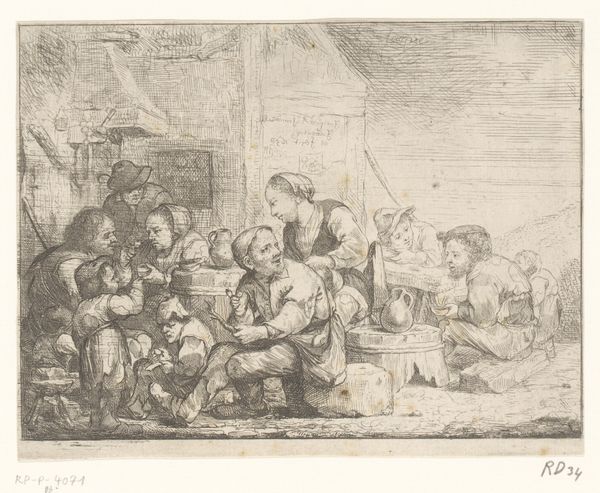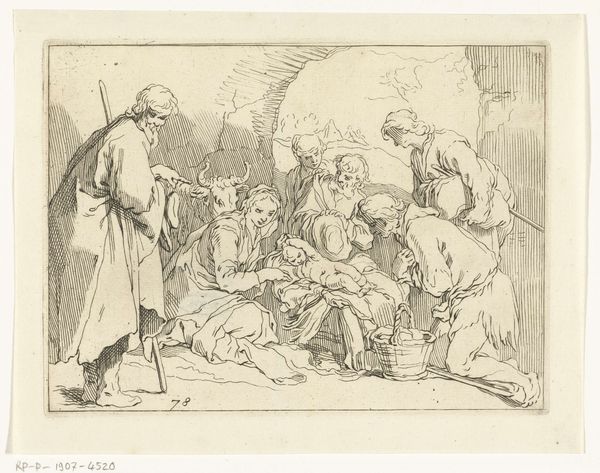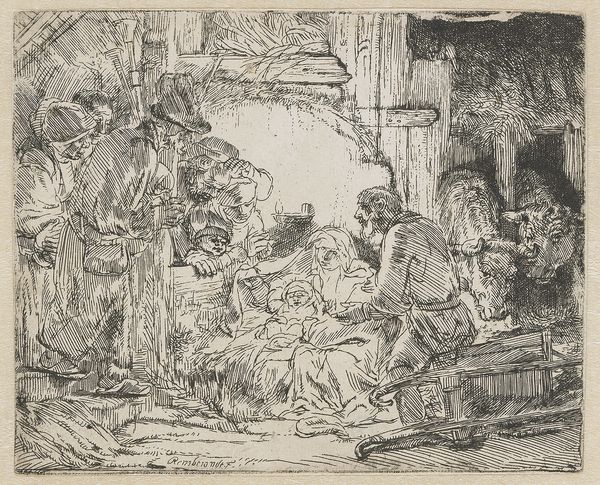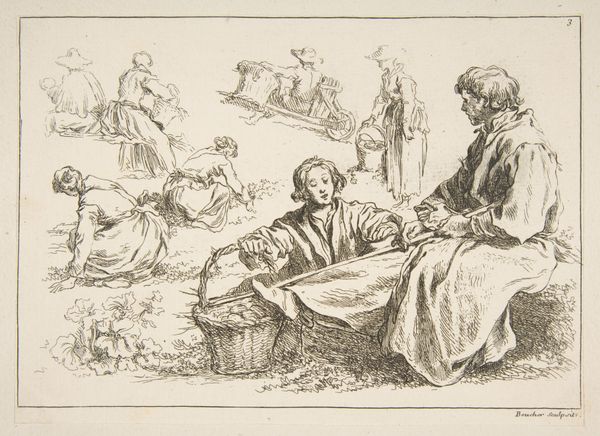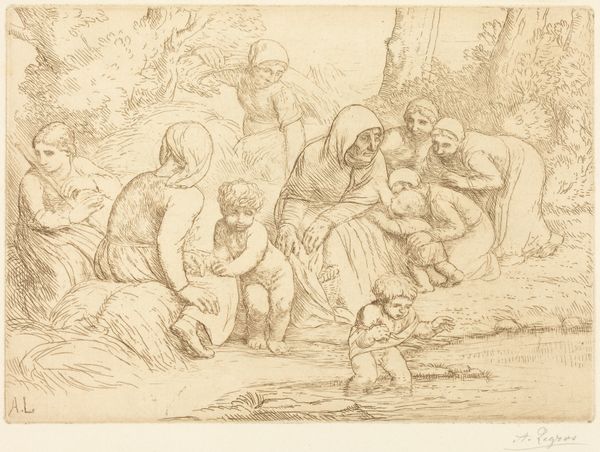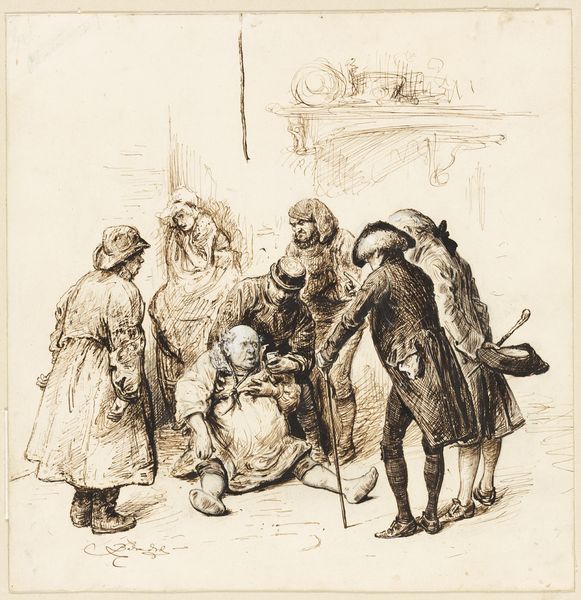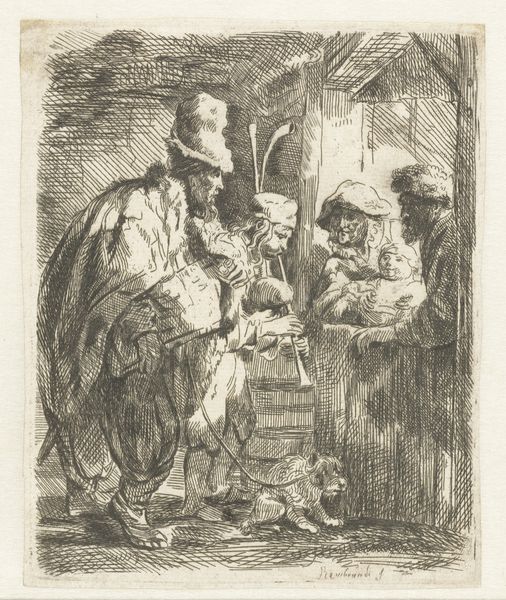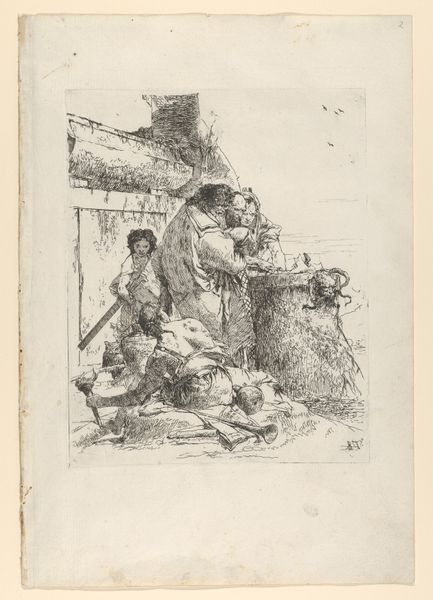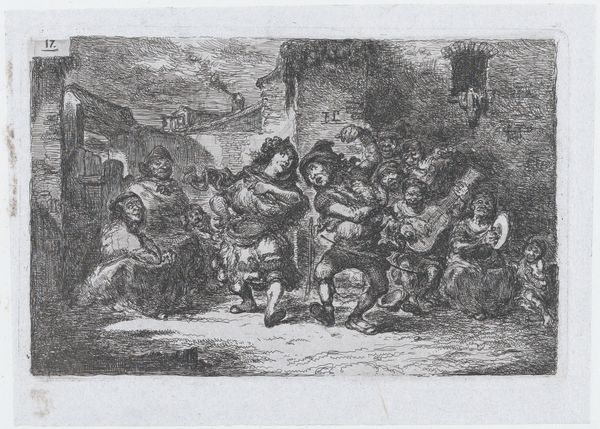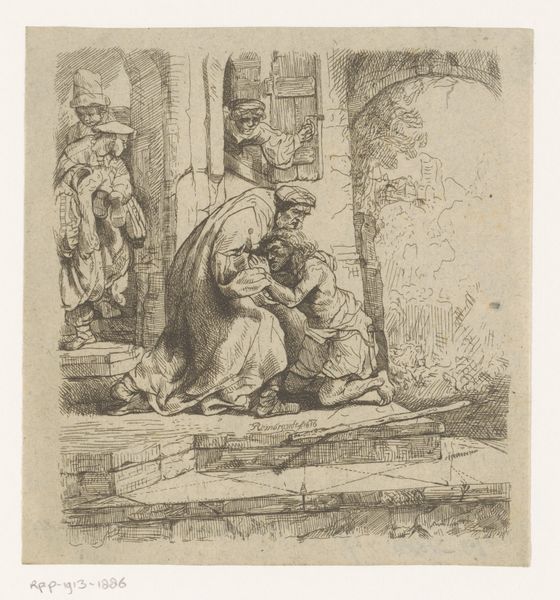
drawing, paper, ink, pen
#
portrait
#
drawing
#
landscape
#
paper
#
ink
#
pen
#
genre-painting
#
realism
Dimensions: height 210 mm, width 305 mm
Copyright: Rijks Museum: Open Domain
Curator: Here we have Alexander Ver Huell’s "Vrouwen geven arme mensen een aalmoes," which translates to “Women Giving Alms to the Poor.” It's a genre painting created between 1832 and 1897, and it’s currently housed right here in the Rijksmuseum. Editor: My first impression is one of stark contrast. The delicacy of the pen and ink on paper seems almost at odds with the weight of the scene—poverty juxtaposed with charity. It's a powerful emotional landscape created with very simple means. Curator: Absolutely. Ver Huell uses this medium to depict a very specific social dynamic of the time. Genre paintings like this played a crucial role in representing everyday life and, often, critiquing or commenting on societal structures. The act of giving alms was both a religious and social performance, a way for the wealthy to demonstrate piety and maintain a certain social order. Editor: It’s interesting to consider the production of this piece as well. Pen and ink drawings would have been relatively accessible, making art creation less dependent on expensive materials or elaborate studio setups. This connects to the emerging accessibility of the art market at the time, and a focus on realism democratized art as an activity. The artist has a strong, clean outline but does not include colors; the result almost resembles a printed sketch in a newspaper, something ordinary. Curator: Precisely. The distribution of these images allowed a wider public to engage with societal issues. And think about the 'realism' movement; artists turned their attention to contemporary life. Instead of depicting grand historical or mythological scenes, Ver Huell is capturing a quiet moment of exchange on the street, highlighting the disparity between the giver and the receiver. The work has the clear purpose of depicting reality in order to allow people to react and recognize problems in society. Editor: And what is also really great, the materiality of the ink itself is key here. The stark, unwavering line reveals a certain starkness to social class. It leaves very little space for any warm or fuzzy association to be had. Curator: Yes, the material itself amplifies the stark realities of the scene. This drawing becomes more than just a representation; it becomes a commentary on the social structures of the time. Editor: Considering the humble materials, the artist creates so much meaning here. Curator: Indeed, it is really a commentary on the ways social realities can be visualized in relatively simple materials.
Comments
No comments
Be the first to comment and join the conversation on the ultimate creative platform.
